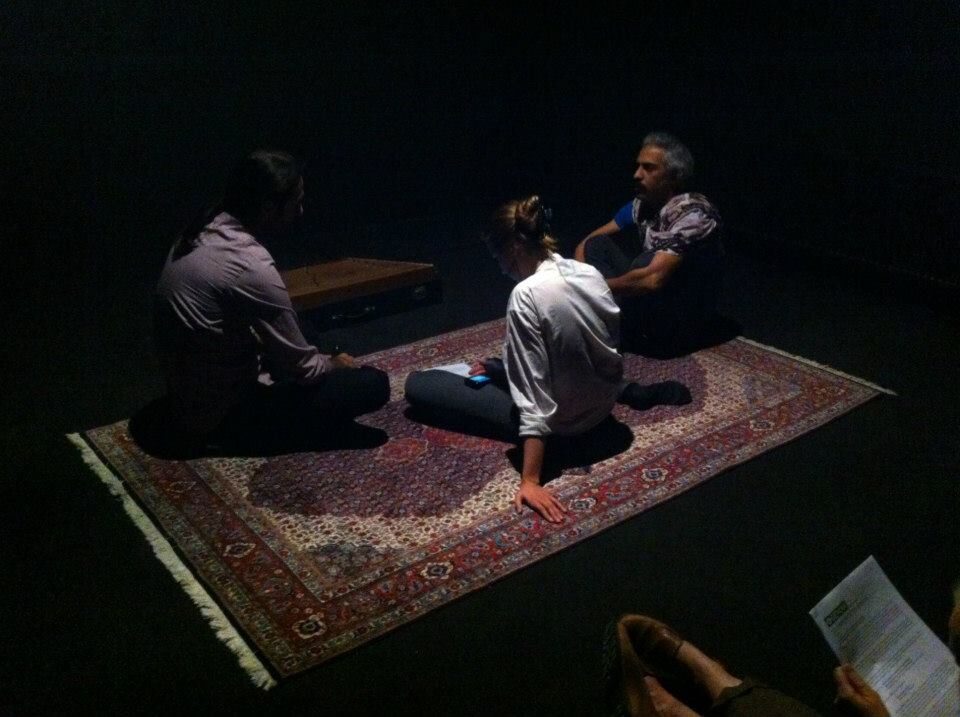
Vrije Academie Gemak, The Hague
Program note:
I have no refuge in the world other than thy threshold.
There is no protection for my head other than this door.
This seven-hour piece could be best described as something between a piece of music and an installation. The temporal aspect of music will be less in the foreground; instead the emphasis will revolve around textural and spatial aspects of sound. The material used for the music consists of numerous basic elements which together create a complex texture in constant change. An interesting fact about the used material is that the sound projects itself from a single source (speaker) and then all the reflections of the room fills the whole space. The music is defined by space and its reflections. The plurality of this basic element creates the unity of the final result. These sine waves fill the whole frequency range from very low to very high frequencies and at same time they move in a quasi-chaotic way up and down but in a certain range. All the intricate relationships between these sine waves create various timbre identities, which emerge slowly from the texture and disappear. However, the music has a monolithic formal structure. The sound material is initially derived from a couplet of a poem by Hafez, the famous 14th century Iranian poet. These lines are inscribed in a small box on top of the famous Ardabil carpet followed by the signature of the court servant, Maqsud of Kashan, and the date “1539-40.” *
The lines are:
I have no refuge in the world other than thy threshold.
There is no protection for my head other than this door.
[The work of the slave of the threshold Maqsud of Kashan in the year 946]
The carpet-theme has been the main one in my recent works, and it is also the subject of my research for my masters’s thesis during which I focused on composing music based on carpet features. The lines, the couplet, of this particular poem are linking this new work with my compositions based on carpets. Each verse of this couplet consists of seven words corresponding to seven sections of the piece. Each word of this verse is approximately, extended to one hour. In this way you could say we hear the whole couplet in seven hours but since this is extremely long, it is impossible to perceive the words For me it is similar to the phenomenon of perceiving the sun in the sky as a stationary solid object since it moves extremely slow, but we will never be able to experience or capture it’s true nature or being as a whole or within the same time-frame. In this way we are also incapable of perceiving the poem at such a huge torn apart time-scale. The sound-installation/composition addresses issues of time, perceiving time and time based spatial experiences. In fact the poem is interwoven within time-space; seven hours almost matches the time of the exhibition opening hours during one day. Another part of the installation involves a broken instrument (a traditional Persian instrument) which is suspended in the space and will at times be used as a speaker by attaching a transducer to the instrument, so the instrument will play without being played! The instrument is deformed because of relocation to a new country with different weather conditions, a change of location (locus) which adds another layer to the work. Some parts of the music are projected through the instrument and combine with the rest of music.
*The Ardabil Carpet, is one of the world’s oldest carpets and one of the largest, most beautiful and historically important in the world. In 2006, the V&A created a case in the centre of Room 42.